A Brief History of Employer-Sponsored Healthcare [From the 1930s to Now]
As Americans continue to debate the impact of the Affordable Care Act (ACA), perhaps a quick look at the historical timeline of employer-sponsored healthcare will provide context for the state of American healthcare as it exists today.
Small Beginnings

Before the 1930s, the American public largely paid its own way where medical costs were concerned. With the exception of a few industries, employers by and large had little motivation to provide health coverage. Americans who worked in dangerous professions like mining, steel, and railroads had access to company doctors in industrial clinics or union-operated infirmaries. Though this was not healthcare as it exists today, these company-sponsored clinics were some of the earliest precedents of businesses becoming involved in their employees’ well-being.
The '30s: The Great Depression
 After his election to the presidency in 1932, Franklin D. Roosevelt chose not to pursue universal healthcare coverage. Several factors influenced his decision, not the least of which was major opposition from the American Medical Association. Roosevelt toyed with the idea of nationalizing healthcare as part of his plan for Social Security. However, he was a politically astute man, and he realized that tying universal health coverage to the Social Security Act might doom both initiatives to failure.
After his election to the presidency in 1932, Franklin D. Roosevelt chose not to pursue universal healthcare coverage. Several factors influenced his decision, not the least of which was major opposition from the American Medical Association. Roosevelt toyed with the idea of nationalizing healthcare as part of his plan for Social Security. However, he was a politically astute man, and he realized that tying universal health coverage to the Social Security Act might doom both initiatives to failure.
Of course, Roosevelt's decision left unresolved the pressing need of many Americans for some way to deal with healthcare costs. In the grips of the Great Depression, many were hard pressed to find money for essentials like food and shelter. Healthcare often fell by the wayside for families working to access the basic necessities of life.
Into this environment came the beginnings of private health insurance. Blue Cross and Blue Shield plans paved the way for private insurers to begin crafting plans to meet the needs of the growing market. Still, at this stage, employers were not generally in the picture, and these original health insurance offerings were purchased almost exclusively by individuals.
The 40's: World War II & the Dawn of Employer-Sponsored Health Insurance

Once America became embroiled in World War II, there was great concern that rampant inflation would threaten America's military effort and undermine its domestic economy. The concern was valid, as Americans had witnessed what inflation had done to war-torn Germany, devastating its economy and giving rise to Hitler's regime.
To combat inflation, the 1942 Stabilization Act was passed. Designed to limit employers' freedom to raise wages and thus to compete on the basis of pay for scarce workers, the actual result of the act was that employers began to offer health benefits as incentives instead.
Suddenly, employers were in the health insurance business. Because health benefits could be considered part of compensation but did not count as income, workers did not have to pay income tax or payroll taxes on those benefits.
Thus, by 1943, employers had an increased incentive to make health insurance arrangements for their workers, and the modern era of employer-sponsored health insurance began, a pivotal point in the History of Healthcare in America.
The '50s Through The '80s: Vision, Dental & Medicare
 The 1950s saw the expansion of healthcare coverage options, as strong labor unions began to bargain for better benefit packages. Major medical plans evolved during this era, with vision care becoming a popular option in 1957 and dental benefits becoming an offering in 1959.
The 1950s saw the expansion of healthcare coverage options, as strong labor unions began to bargain for better benefit packages. Major medical plans evolved during this era, with vision care becoming a popular option in 1957 and dental benefits becoming an offering in 1959.
This created a serious situation for retirees, however. Because employer-sponsored healthcare had now become the cornerstone of the entire American healthcare system, health costs fell victim to inflation, and retired Americans found themselves unable to afford private coverage.
In 1965, Lyndon Johnson created the Medicare and Medicaid systems to address the issue of healthcare for retirees and for those working in low-paying jobs for companies that did not offer healthcare benefits.
By the late 60's and early 70's, it was becoming increasingly clear that healthcare reform was in order. In 1971, Senator Edward Kennedy proposed a single-payer plan that would have likely expanded nationalized healthcare to every American. Nixon had his own plan, and it appeared that healthcare reform would happen. However, Watergate derailed that plan, and healthcare reform took a back seat to other national policy issues for the following decades.
The '90s Through Today: Health Security Act, HMOs & ACA
With Bill Clinton's election to the presidency in 1992, healthcare once again took center stage in the national debate. Putting his wife, Hillary Clinton, in charge of promoting his health insurance reform plan known as the Health Security Act, Clinton intended to enact legislation that would require virtually all Americans to enroll in a  health policy, which would be managed by regional purchasing cooperatives.
health policy, which would be managed by regional purchasing cooperatives.
By 1993, Clinton's plan died in Congress, largely because it was considered too radical an overhaul of the healthcare system. This left the major portion of healthcare still in the hands of employers. To deal with the growing number of employers who were dropping coverage because of rampant inflation, the HMO as we know it today was born.
Employees were generally unhappy with managed care options, as they wanted greater autonomy concerning their health decisions. Patient “bills of rights” were crafted, and HMOs became more liberal, with so-called open-access plans. Meanwhile, healthcare costs continued to rise.

In 2010, in response to the crisis state of American healthcare, President Obama signed into law the Affordable Care Act. Met with stiff opposition and widely called by the moniker “Obamacare,” the ACA is still in its infancy. While it remains to be seen what the long-term effects of Obamacare will be, there is little doubt that we are in the midst of a new chapter in America's turbulent healthcare history.
Where Do Employer Sponsored Healthcare Plans Stand in the Age of Coronavirus?
.jpg?width=6127&name=shutterstock_1646005354%20(1).jpg)
The economic strain caused by the COVID-19 coronavirus pandemic has complicated the challenges employers face when managing their employee benefits program and forecasting health care costs for their employees.
While future impacts to costs and the course of the coronavirus pandemic are unknown, employers, most notably those with self-funded group health plans, must be mindful of this variability, as well as the wide swings in predictions from experts across the board. Regardless of which way things play out, they need to take careful steps to ensure the financial viability of their health plans during this crisis.
As of September 2020, employers have been patiently waiting on renewal figures from carriers to start setting contribution levels for the 2021 plan year. The healthcare industry as a whole initially braced for higher claims when the pandemic began, and from April through June most employers enjoyed historically low claim costs.
Preventative and elective care deferrals were the primary drivers of this decline, along with peoples’ collective reluctance to seek medical care - even needed care – due to fear of exposure to the virus. The increase in the use of telemedicine also helped to defray claim costs.
While employers are hoping the reduction in claims would result in favorable 2021 renewal rates, to date it appears most carriers will be offering only modest increases. This is likely due to the possibility of pent-up deferred care, along with the potential second – and maybe even third – waves of coronavirus cases.
It’s important to note that some research suggests that lack of management of chronic conditions and delayed care is already manifesting in escalating claim costs.
To that end, as we addressed in one of our blog posts from May, "The Financial Impact of COVID-19 On Self-Funded Employer-Sponsored Group Health Plans", there are several steps that self-funded employers should take to prepare for any shifts in claim costs, not the least of which was an adjustment to claim reserves.
Historical evidence suggests that the current expense reduction related to deferred care won't re-materialize post-pandemic. In similar crisis, such as natural disasters, close to 50% of what are considered "variable claims" never showed back up in the healthcare system. Net, a dollar-for-dollar pent-up need for care may not emerge when the pandemic finally subsides.
Fully-insured employers will be at the mercy of what their carrier partners are anticipating. Conversely, self-funded employers could have the opportunity to recap the reward of two concurrent years of lower claims in the event carrier fears about higher claims do not materialize.
Fully-insured employers who are dissatisfied with their renewal quotes may want to go to market with their plans. Carrier RFP volume has reportedly decreased more than 50% from 2019, and there has been some aggressive pricing from carriers anxious to win business in this otherwise slow market.
In summary, next year’s medical costs will likely depend on several things:
- The amount of pent-up demand in the system
- The effectiveness policies have on mitigating the spread and potential second and third waves of the Coronavirus
- The effectiveness of therapies to minimize fatalities and hospitalizations
- How long it takes, and the cost, to develop antibody testing and a vaccine.
The Future of Employer Sponsored Healthcare Plans
Employer-based healthcare came out of a market-driven response by employers after World War II. It grew out of a strong economy, low unemployment rates, and intense competition for talent. Now, employer-based health benefits is the most common form of health coverage in America, with approximately 167 million people under 65 in 2017 receiving employment based healthcare.
But what will happen now that the economy is wobbling due to Coronavirus and rising unemployment rates? As of September 2020, unemployment remains above 8%. While this is much improved from the 14.7% high that was reached in April of 2020, it’s still higher than any time in recent memory.
The Families First Coronavirus Response Act (FFCRA), enacted March 18, and the Coronavirus Aid, Relief and Economic Security (CARES Act), enacted March 27, expanded coverage requirements for all health plans, including employer-sponsored group plans, whether self-insured or fully insured.
Most of the major health insurance carriers, including Aetna, Cigna, Humana and United HealthCare, as well as Blue Cross/Blue Shield in many states, announced they would go beyond the requirements of this new legislation and waive cost-sharing (e.g. deductibles, co-insurance, and co-pays) for hospitalizations related to COVID-19 treatment for fully insured plan members. The carriers gave self-funded plans for which they serve as third-party administrators the option to do the same.
Staying Competitive in the Age of Coronavirus
Employers have discovered that they will have to do far more than simply change coverage options for COVID-19 related illnesses to remain competitive. Here’s a list of changes that appear to take root;
Mental Health Services: Since pandemic began, employers have looked for ways to provide employees with meaningful mental health and emotional well-being resources to reduce burnout and treat mental health issues such as anxiety, loneliness, and depression.
Larger employers in particular are helping address access and cost barriers by securing mental health services onsite. Many employers are reducing out-of-pocket costs as well by either lowering or waiving fees altogether for virtual mental health services.
Many employers are additionally providing increased access to other online mental health support resources such as apps, videos, and additional on-demand information. Still others are implementing manager training to help supervisory staff recognize mental and behavioral health issues and direct employees to the appropriate services.
Telemedicine: Telemedicine has also accelerated at an astronomical rate, likely brought into the mainstream by the volume of traditional medical providers who shifted to telehealth office visits when the pandemic first arrived.
This migration to virtual care was accelerated through the permission granted by the Centers for Medicare & Medicaid Services (CMS) to allow Medicare and Medicaid recipients to receive care via telemedicine.
With that endorsement, providers, carriers, and health plans embraced the move to telemedicine. While it remains far more suitable for consultations, screenings, and counseling than it does for services which require physical contact and examination, it appears as if telemedicine is here to stay.
"Telemental health" is also an area of care that appears to be outpacing other specialties, especially because virtual delivery helps address provider shortages, minimize wait times, and reduced stigma that can be associated with seeking mental care.
More Flexible Time Off: With employees’ reduced options for vacations and traveling, employers are altering their PTO policies. According to a recent Willis Tower Watson study, 42% of employers plan to alter their PTO policies out of concern employees won't use theirs during the pandemic.
Employers are doing this a few ways:
- Allowing employees to carry over some of their unused PTO into the next calendar year
- Experimenting with PTO sharing programs where employees donate vacation time to a charity, a general company fund, or a specific colleague.
- Allowing employees who need to take time off either voluntarily or out of necessity to incur a negative PTO balance (21% of employers have elected this option).
- Allowing employees to use a portion of their unused PTO to pay off student loans.
Because debt is one of the most significant drivers of stress and anxiety, the ability to pay off debt with unused PTO can yield tremendous dividends in terms of creating a healthier, more productive, and loyal workforce.
Insurance provider UNUN has been using this approach with their workforce for over a year, through a partnership with Fidelity Investments. (We recently launched a similar program ourselves here at the JP Griffin Group.)
Caregiving and Childcare: As schools have struggled to open for the Fall semester – many of them have tried and had to close again - some employers are offering caregiving leave and/or childcare benefits in the form of subsidized childcare.
This benefit could accelerate the labor-market recovery, since it is estimated that as many as 18 million Americans may avoid job hunting if schools remain closed, according to a recent Bloomberg Economics report.
Rewards for Remote Staff: Employers are finding creative ways to reward remote staff with food delivery gift cards from places like Grub Hub and Uber Eats, along with subsidies to buy themselves home office accoutrements such dual monitors and comfy, ergonomic Herman Miller office chairs.
Some employers are offering employees credits for booking online experiences. In fact, many Napa and Sonoma wineries, such as Frog's Leap, are offering virtual tastings, while Airbnb if offering thousands of one-on-one virtual experiences – everything from a master class in brewing coffee to lessons on how to cook Mexican street tacos. There are even classes on glass blowing and oil painting taught by professional artists who are also stuck at home.
Virtual Wellness and Team Building Events: Many employers are taking their wellness programs online by offering virtual yoga, kickboxing, Tae Kwon Do, and other types of fitness classes. Employers are encouraging wellness by sponsoring contests such as a virtual fun run. Walking and biking competitions are also proving to be enormously popular.
Employer-hosted virtual lunch 'n learns, as well as virtual happy hours and collaborative movie watching, are other methods of increasing employee morale and connection. Online gaming sessions, which have included trivia contests, Zoom bingo, and competitions for best virtual backgrounds, are also popular. Even ‘old-fashioned’ Zoom-friendly games such as Scattegories, Pictionary, Charades, and Heads-up are fun ways to keep employees engaged.
By being proactive and prioritizing both employee health and the active management of the cost of healthcare, employers should be able to weather the storm of Coronavirus without too many fluctuations in cost or the health of their employees.
For information about employer-sponsored healthcare initiatives and how the Affordable Care Act affects them, please schedule a complimentary benefits review for your firm.
As experienced benefits consultants, we can answer your questions and work with you to craft a benefits package that is ACA-compliant and affordable for your business and your employees.
*Blog post originally published on August 17, 2015



















